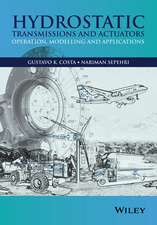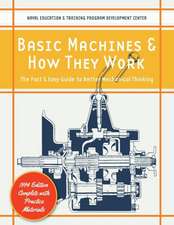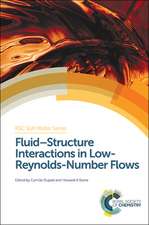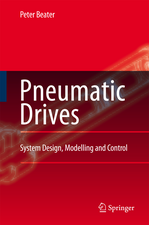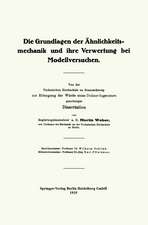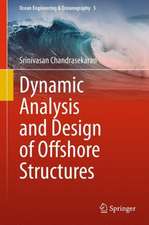Recent Advances in Hydraulic Physical Modelling: NATO Science Series E:, cartea 165
Editat de R. Martinsen Limba Engleză Paperback – 27 sep 2011
| Toate formatele și edițiile | Preț | Express |
|---|---|---|
| Paperback (1) | 1832.53 lei 6-8 săpt. | |
| SPRINGER NETHERLANDS – 27 sep 2011 | 1832.53 lei 6-8 săpt. | |
| Hardback (1) | 1839.95 lei 6-8 săpt. | |
| SPRINGER NETHERLANDS – 30 apr 1989 | 1839.95 lei 6-8 săpt. |
Din seria NATO Science Series E:
- 24%
 Preț: 1570.70 lei
Preț: 1570.70 lei -
 Preț: 397.76 lei
Preț: 397.76 lei -
 Preț: 386.81 lei
Preț: 386.81 lei - 20%
 Preț: 346.24 lei
Preț: 346.24 lei -
 Preț: 424.33 lei
Preț: 424.33 lei - 18%
 Preț: 1224.18 lei
Preț: 1224.18 lei - 18%
 Preț: 1836.63 lei
Preț: 1836.63 lei - 18%
 Preț: 1229.28 lei
Preț: 1229.28 lei -
 Preț: 381.00 lei
Preț: 381.00 lei -
 Preț: 409.30 lei
Preț: 409.30 lei - 18%
 Preț: 1841.36 lei
Preț: 1841.36 lei - 5%
 Preț: 367.28 lei
Preț: 367.28 lei -
 Preț: 407.19 lei
Preț: 407.19 lei - 18%
 Preț: 1838.38 lei
Preț: 1838.38 lei -
 Preț: 420.28 lei
Preț: 420.28 lei -
 Preț: 399.29 lei
Preț: 399.29 lei -
 Preț: 398.74 lei
Preț: 398.74 lei - 18%
 Preț: 3026.13 lei
Preț: 3026.13 lei -
 Preț: 388.90 lei
Preț: 388.90 lei - 5%
 Preț: 391.06 lei
Preț: 391.06 lei - 18%
 Preț: 1228.62 lei
Preț: 1228.62 lei - 18%
 Preț: 1229.73 lei
Preț: 1229.73 lei - 18%
 Preț: 1234.46 lei
Preț: 1234.46 lei - 5%
 Preț: 3532.05 lei
Preț: 3532.05 lei - 18%
 Preț: 1840.11 lei
Preț: 1840.11 lei - 5%
 Preț: 378.80 lei
Preț: 378.80 lei - 18%
 Preț: 1227.84 lei
Preț: 1227.84 lei -
 Preț: 392.75 lei
Preț: 392.75 lei -
 Preț: 395.63 lei
Preț: 395.63 lei - 18%
 Preț: 2489.30 lei
Preț: 2489.30 lei - 5%
 Preț: 1429.27 lei
Preț: 1429.27 lei -
 Preț: 396.02 lei
Preț: 396.02 lei - 5%
 Preț: 2142.61 lei
Preț: 2142.61 lei - 18%
 Preț: 3049.16 lei
Preț: 3049.16 lei - 18%
 Preț: 1844.54 lei
Preț: 1844.54 lei -
 Preț: 403.53 lei
Preț: 403.53 lei
Preț: 1832.53 lei
Preț vechi: 2234.80 lei
-18% Nou
Puncte Express: 2749
Preț estimativ în valută:
350.70€ • 364.78$ • 289.52£
350.70€ • 364.78$ • 289.52£
Carte tipărită la comandă
Livrare economică 14-28 aprilie
Preluare comenzi: 021 569.72.76
Specificații
ISBN-13: 9789401075558
ISBN-10: 9401075557
Pagini: 648
Ilustrații: XVIII, 627 p.
Dimensiuni: 155 x 235 x 34 mm
Greutate: 0.9 kg
Ediția:Softcover reprint of the original 1st ed. 1989
Editura: SPRINGER NETHERLANDS
Colecția Springer
Seria NATO Science Series E:
Locul publicării:Dordrecht, Netherlands
ISBN-10: 9401075557
Pagini: 648
Ilustrații: XVIII, 627 p.
Dimensiuni: 155 x 235 x 34 mm
Greutate: 0.9 kg
Ediția:Softcover reprint of the original 1st ed. 1989
Editura: SPRINGER NETHERLANDS
Colecția Springer
Seria NATO Science Series E:
Locul publicării:Dordrecht, Netherlands
Public țintă
ResearchCuprins
1 Fundamentals of Hydraulic Physical Modelling.- 1. Introduction.- 2. Principles of the Theory of Dimensions.- 3. Principles of the Theory of Similarity.- 4. Hydraulic Models.- 5. Further Approaches to Hydraulic Model Design.- 2 River Models.- 1. Non Maritime Models with Fixed Bed.- 2. Sediment Transport in Rivers.- 3. River Models with Movable Bed.- 3 Models for Study of the Dynamic Behaviour of Structures in Flow and Waves.- 1. Introduction in the Held of Hydro-Elasticity.- 2. The Single Resonator in a Flow Field.- 3. Response Calculations at Random Excitation.- 4. Introduction to Added Mass, Added Damping, Added Rigidity and Self-Excitation.- 5. Models with Elastic Similarity for the Investigation of Hydraulic Structures.- 6. The Use (Applicability and Limitations) of Physical Models in Vibration Research.- 7. Interpretation of Results.- 8. Cavitation Research.- 9. Strategy for Vibrations-Free Design of Larger Gate Structures.- 10. New Developments in the Field of Modelling Hydro-Elasticity.- 4 Models for Study of the Hydrodynamic Actions on Hydraulic Structures.- 1. Introduction.- 2. Hydrodynamic Actions on Stilling Basins.- 3. Dynamic Analysis.- 4. Hydraulic Modelling of Hydrodynamic Actions.- 5 Density Models.- 1. Introduction.- 2. Modelling Principles.- 3. Scale and Boundary Effects.- 4. Limitations.- 5. Model Specifications.- 6. Applications.- 7. Case Studies.- 6 Tidal Models.- 1. Introduction.- 2. Model Laws.- 3. Boundary Conditions.- 4. Operation of Tidal Models.- 5. Instrumentation. Data Acquisition and Model Control.- 6. Case Studies.- 7 Hybrid Modelling as Applied to Hydrodynamic Research and Testing.- 1. Introduction.- 2. The Design of the Demonstration Hybrid Model.- 3. The Construction of the Demonstration Hybrid Model.- 4. Experimentation with the Hybrid Model.- 5. Other Tidal Control Machines.- 6. Future Plans.- 7. Hybrid Applications.- 8. Future Aspects of Hybrid Modelling and Conclusions.- 8 Wave Grouping and Harbour Design. Safe Underkeel Allowances for Vessels in Restricted Depths.- I.- 1. Introduction.- 2. Real Sea Measurements.- 3. Random Wave Model.- 4. Real Time Set-Down Compensation.- 5. Experimental Results.- 6. Application to a Physical Model.- 7. Conclusions.- II.- 1. Introduction.- 2. Background to the Dover Strait Study.- 3. Acceptable Risk Factor.- 4. Wave Climate in the Dover Strait.- 5. Ship Responses in Waves.- 6. Water Depth Uncertainties.- 7. Vessel Squat.- 8. Calculation of Underkeel Allowances.- 9. Conclusions.- 9 Sea Wave Simulation.- 1. Introduction.- 2. Sea Wave Characterization.- 3. Computer Simulation.- 4. Physical Model Simulation.- 5. Topics on Multidirectional Simulation.- 6. “Deterministic” and “Non-Deterministic” Simulation.- 10 Dynamic Actions on Breakwaters (Rubble-Mound and Caisson/Composite Type Breakwaters).- 1. Rubble-Mound Breakwaters.- 2. Caisson/Composite Breakwaters.- 11 Physical Modelling of Littoral Processes.- 1. Abstract.- 2. Introduction.- 3. Coastal Processes-An Overview.- 4. Modelling Facilities.- 5. Hydrodynamic Physical Models.- 6. Littoral Process Models.- 7. Model Testing Procedures.- 8. Conclusion.- Final Remarks.- Annexes.- Annex 1 — Introductory words.- Annex 2 — Panel sessions/round tables.- Annex 3 — Non-usual hydraulic models.- Annex 4 — Higher order wave generation in laboratory experiments.- Annex 5 — List of participants.





